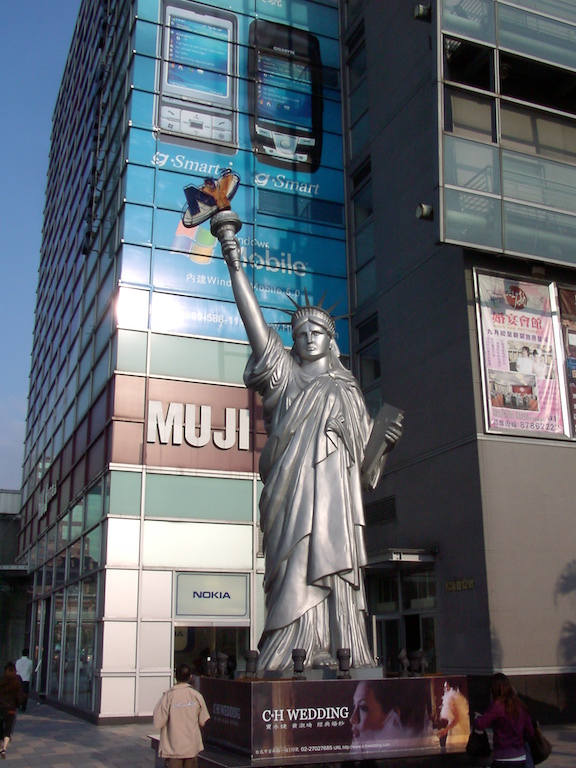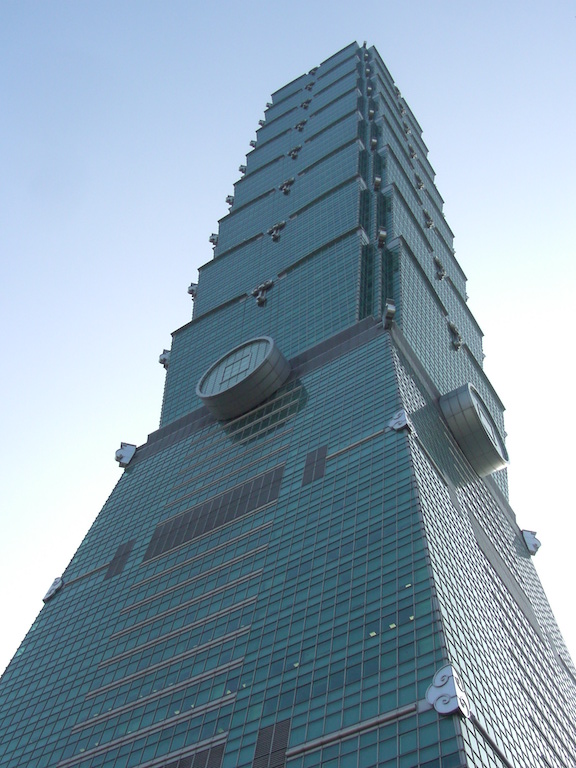posted: August 12, 2023
tl;dr: As I’ve seen firsthand, Taiwan is a good friend and important partner to the United States...
I had the pleasure of visiting Taiwan, a.k.a. the Republic of China, several times from 2007 to the early 2010s while I was working on ADC Kentrox’s factory outsourcing strategy. With Taiwan’s status as an independent country in doubt and perhaps on the verge of changing over the next several years, I thought I should record my thoughts about it. Yes, I do call Taiwan a country, even though U.S. government officials cannot do so without violating Richard Nixon’s One China policy.
Taiwan, at least when I visited, was a solidly pro-U.S.A. country that had an uneasy relationship with mainland China, the People’s Republic of China, governed by the ruling Chinese Communist Party (CCP). Mainland China is a mere 200 miles across the Taiwan strait, whereas the United States is thousands of miles away, so there is incentive for the Taiwanese to do business with the mainland. Yet the Taiwanese are also fully aware of the downsides of CCP rule, and value their vibrant democracy and autonomy.
I saw more American flags displayed in Taiwan than one sees in most American cities. The Taiwanese people I met were friendly and had positive things to say about the U.S.A.: again, a difference from what one finds in some American cities. They relished their trips to the U.S.A. Many people in Taiwan, more so than in mainland China, speak English, and have adopted traditional English names to use when conducting international business. Thus I met folks with names such as Emily, Alan, Elizabeth, Steven, etc. Hardly anyone in Taiwan (or most of modern Asia, for that matter), lives in single-family detached homes, but the Taiwanese in and around Taipei were solidly middle-class, with the same concerns about family and the economy as middle-class Americans.
Many Taiwanese enjoy bicycling, and motorbikes and scooters are plentiful. Baseball is a popular sport for children to play and adults to watch. The best Chinese cuisine is in Taiwan, not the mainland, and there are also fine restaurants featuring cuisines from around the world, just like in the United States. Taiwan is a small island country and there is not much natural beauty to see or hike, but it does have an impressive museum: the National Palace Museum, which houses many ancient artifacts from Chinese civilization that the Nationalists escaped to Taiwan with when they evaded the communists. If I had to spend a couple of years on assignment in a foreign country, I would not object to Taiwan.

Is the Statue of Liberty still standing on a Taipei city street corner, and if so, will it be ten years from now?
Although mainland China now has taller buildings, at the time I visited Taiwan laid claim to having the tallest building in the world, Taipei 101, named after the number of stories. Having traveled to Taiwan from the Chicago area, home to the 110-story Sears Tower, I felt this was stretching the truth. The observation deck of Taipei 101 is on the 89th floor; the Sears Tower observation deck is on the 103rd floor, and definitely feels higher up, if you compare the views. In Taipei 101 you can go outside on the 91st floor (the roof of the 90th floor), where you see the much smaller-footprint final 11 stories of the building, which are not open to the public nor in regular use. At the top of the final 11 stories is a spire, which counts in the building’s official height, whereas the antennas on top of the Sears Tower do not. I was, however, polite to my Taiwanese hosts and commended the small country of Taiwan for the great achievement of having built the world’s tallest building, at the time.
There was another major construction project I saw that was, in fact, more impressive than anything in the United States, where it is now extremely difficult and expensive to build roadways, airports, and train lines. The road from Taipei City to the high tech area of Hsinchu was heavily traveled, and to increase highway capacity the Taiwanese had a huge project underway to add a second deck to the highway. There are some elevated roadways in the United States but nothing on the scale of what I saw in Taiwan.
Hsinchu itself was a denser version of Silicon Valley. In addition to Taiwanese companies, many large United States technology companies also had facilities in Hsinchu. Through the success of Taiwan Semiconductor Manufacturing Company (TSMC), Taiwan has become one of the world’s most important areas of semiconductor manufacturing. There is now a huge TSMC plant under construction in north Phoenix, as the United States attempts to reinvigorate its own semiconductor manufacturing sector. I wonder what the Taiwanese working on that project think of our summer dry heat?

Taipei 101 is an impressive skyscraper, but in my book Chicago's Sears Tower is taller
Whither Taiwan? There is little doubt that Chinese Communist Party (CCP) ruler/dictator Xi Jinping wants the triumphant achievement of reunifying Taiwan with mainland China, to complete the long-stalled communist revolution that Mao Zedong embarked upon in 1949. Xi took action during the COVID-19 endemic to undermine Hong Kong’s special status and make it even more part of China’s single-party state, without having to fire a single shot. Xi would love to do the same with Taiwan, and will create and capitalize on opportunities to do so, I believe. Xi’s eventual goal is to get the Taiwanese to give up their democracy and become subservient to the CCP, at which point his conquest of Taiwan will be complete.
I think that Xi and government leaders in the United States, from both sides of the red/blue divide, understand that an outright invasion of Taiwan would be a suicide pact for both China and the U.S., should the U.S. choose to respond with force. Geopolitical analyst Peter Zeihan makes the argument, in The End of the World is Just the Beginning: Mapping the Collapse of Globalization, that China is highly vulnerable to a naval blockade of energy imports, specifically oil. Meanwhile, as the shortages in the early days of the COVID-19 endemic of critical medical supplies such as PPE (Personal protective equipment) demonstrated, the United States has sent so much of its productive capacity to China that we are highly vulnerable to import disruptions of physical goods.
One way to think about this is to substitute the words “U.S.A.’s factory” for “China”. Instead of asking if the U.S.A. should go to war with China, ask if the U.S.A. go to war with the U.S.A.' s factory? Clearly that would be lunacy. Hence the United States has embarked upon a slow decoupling from China and is “friend-shoring” its manufacturing needs, while China is cozying up to Russia because of its huge energy resources. That makes the War With Russia, being fought for now on the battlefields of Ukraine, important for determining who will control Russia’s energy resources in the future, which affects the balance of power.
In the meantime, Taiwan is likely to remain in limbo. It’s a good place for an American to visit, for now, but I wouldn’t want to live there.